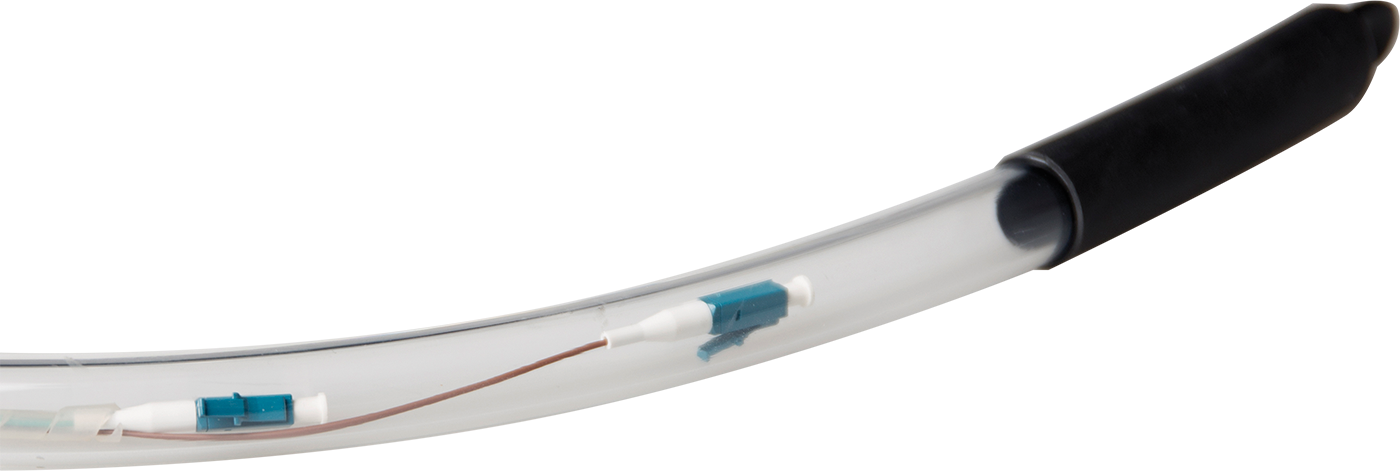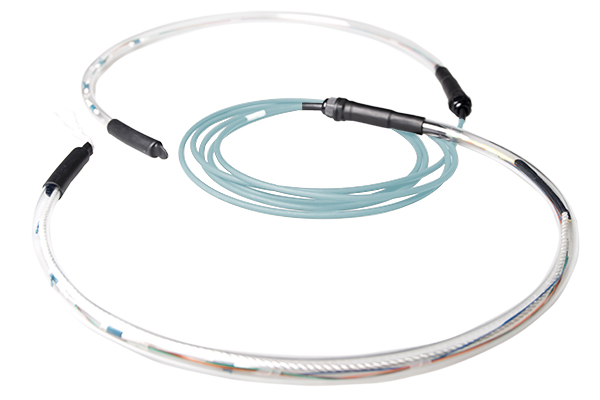Pre-terminated fiber cables: What you should know
With pre-terminated cables you can easily and quickly install a fiber optic network. There are a few things to take note of when installing pre-terminated cables. In this article we explain the most important ones.Structure of a pre-terminated fiber cable
A pre-terminated cable is actually a cable assembly, a combination of different cables and connectors into one assembled ready-to-use product. A fiber optic pre-terminated cable nearly almost always contains multiple fibers.A pre-terminated cable usually consists of the following parts:
- Installation cable: a robust installation cable that is suitable for bridging longer distances and offers good protection against external influences;
- Fanout cables: are multiple small diameter cables with a fiber optic connector at the end;
- Fanout kit: the transition from the installation cable to the fanout cables;
- Cable gland: is in some cases attached on the fanout kit and aims to fix the cable to, e.g. a patch panel or fiber box.
Calculating the right length
In order to calculate the correct pre-terminated cable length, it is essential considering the following things:- Point-to-point distance: The distance between the two points you want to connect without considering any obstacles.
- Horizontal distance: Please keep in mind the obstacles you come across when installing a cable from point A to point B. In data centers, e.g. cables are usually routed through a cable duct / fiber raceway.
- Vertical distance: It is also important to consider the vertical distance. If the cable has to come out halfway through a 19” cabinet, it is important to count the distance from halfway through the cabinet to the cable duct (which may be in the ceiling or in the floor).
In this case an extra cable has to be connected which causes additional transition and optical losses.
Note: Is the length of the cable specified? This refers only to the installation cable and not to the fanout kit and the fanout cables. For more info, see the technical drawing on the right.


Installing a pre-terminated cable
Protect the fanout cables and connectors
When installing a pre-terminated cable, it is important to protect the fanout cables and connectors. These are the most vulnerable parts that can be damaged without protection. We advise to use a protective tube during installation. The protective tube can be removed after installation. ACT pre-terminated cables are standard equipped with a protection conduit on both sides of the cable for optimal protection.
Preferred installation
We recommend to lay the cable if possible. As a last resort pull the cable carefully. The fibers in a fiber optic cable can be damaged by pulling. Fiber optic cables are designed to withstand tensile load so that the fiber remains protected, this is called strain relief. It is important to strain within the specifications of the cable.
This maximum specified tensile load of a cable applies to the installation cable and not to the fanout cables. Fanout cables have a much smaller tensile load. To solve this, ACT pre-terminated cables are equipped with a pulling rope on one side at the end of the protection tube. If this is pulled, the tensile load is placed on the installation cable and not on the fanout cables.
Conduit for outdoor use
Pre-terminated cables are also suitable for outdoor use. Please note that most variants are not suitable for direct burial without any form of protection. The outdoor influences are much bigger than with indoor use. Especially rodents are a threat. For this reason, when using pre-terminated cables outside, a conduit is required. An exception to this are pre-terminated cables with an armoured outer jacket, which offer sufficient protection against external influences because of the armouring.



 Deutsch (Deutschland)
Deutsch (Deutschland)
 Español (España, Alfabetización Internacional)
Español (España, Alfabetización Internacional)
 Français (France)
Français (France)
 Magyar (Magyarország)
Magyar (Magyarország)
 Nederlands (Nederland)
Nederlands (Nederland)



